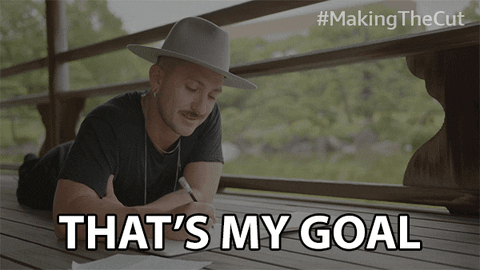6 Easy Steps to Develop Your Video Marketing Strategy
Creating a successful video marketing strategy is the most critical step in developing videos that make an impact. Your strategy will be the blueprint that ensures you’re creating the best, most relevant videos to meet your business goals every time. It will save you time, money and headaches and help you end up with digital content that works for you and provides ROI.
Here’s what we’ll cover:
Video goals
Target audience
Topics
Timeline
Creative
Budget
Video goals
Why do you want to create video content? This may be the most important question to ask right from the start. Do you want to attract new clients, give potential customers important information for decision making, and convince them to make a purchase or inspire advocacy for your brand. You might want a video you can use to raise investment capital.
Before you begin your video marketing strategy, it’s important to know how each video will help you achieve these goals.
You’ll likely have more than one goal spread across multiple videos. That’s where a content calendar can help you determine how many and how often you need each type of video. It can also help you figure out where the videos will be used and when.
Target Audience
Once you’re clear on the goal, you’ll need to define the audience you’re targeting. What do you need your audience to do (what is the call-to-action), think, or feel after watching your video? If you can answer that, you have a solid foundation.
If you know your audience well – their business challenges, pain point, needs, or desires – you’ll be able to create a video that speaks directly to them. Creating a video specifically for your target audience will make it much more relevant and actionable to them, and therefore increase its effectiveness.
Who is it for? Consider age, industry, location, language, income, title, etc.
What is the purpose? Think about where this video will live in your buyer funnel stages: Will it be used for awareness to draw viewers in for more information, education to help them understand what you’re offering on a deeper level, at the point of purchase, or after purchase to increase loyalty and advocacy (think: a customer who has purchased from you and you’d like to include a video in a follow up email campaign)?
Where will they see the content? Will this video live on your company website and/or social media, be streamed at a live event, shared privately on a Zoom call, etc. Each platform where your content will be seen might have its own requirements for video content.
The audience should inform every decision you make, from the colors, location and fonts you might use to the channel that you share your video on and more.
Creativity and Types of Videos
With your goals determined and your audience persona created, you’re well on your way to a sound video marketing strategy. When deciding the creative direction for your video, you’ll need to give your audience what they need so they can do, think, feel, or act in a way that will advance your goal.
Awareness: What kind of content do you need? You may need a video to demonstrate a problem your audience has and provide a solution they may not know about. This could be a demonstration video. Perhaps you have a live webinar coming up and want to include a video explaining what the webinar is and who it’s for. A short, fun animated video could work for this.
Consideration: Your audience may already know about you but they’re deciding between brands or providers. In this research phase, you’ll want to show them why your product or service is the best. A product video or explainer video might be a good choice. If you create a product video, don’t forget to make it look amazing in each and every shot.
Conversion: They’re ready to make a purchase and just need a final push or reminder to do so. Prove why they should choose your product or service over the competition by giving them testimonial videos or animated product reviews to convince them.
Timeline
The best-laid plans in the world can fall apart if you can’t achieve them within your timeline. A strategy planned well in advance can help ensure that you’ll have enough time before product launches or significant seasons to prepare your video.
When developing your timeline, consider the approvals your video will have to go through and how much time each will need. You should also try to identify 1-3 people on your team who are key stakeholders and can make final decisions all throughout the project lifecycle.
When planning, consider a separate timeline for each phase of the process: Strategy, production, distribution and others you might have.
Budget
Having everything above outlined in your strategy will be a good starting point for understanding your budget needs. This will give you a good indication of how much time it will take, the location, props, etc. You’ll know what you will do in-house and what you’ll need to outsource to your production company.
As every good girl and boy scout knows, failure to plan is a plan to fail. So make sure you have a solid video marketing strategy in place before you begin production. It will save you time, money and help ensure you’re creating videos that perform well for your goals.




